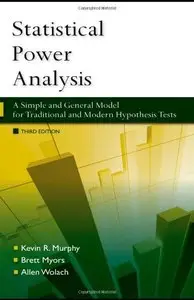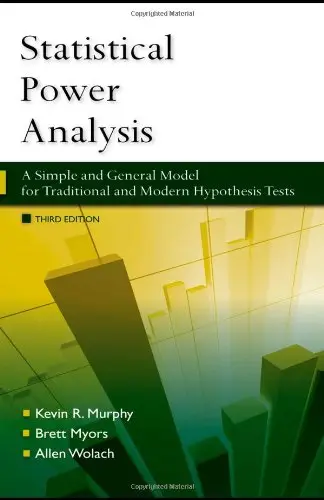Statistical Power Analysis: A Simple and General Model for Traditional and Modern Hypothesis Tests, Third Edition by Kevin R. Murphy, Brett Myors and Allen Wolach
English | 2008 | ISBN: 1841697745 , 0415965551 | 224 pages | PDF | 1,6 MB
English | 2008 | ISBN: 1841697745 , 0415965551 | 224 pages | PDF | 1,6 MB
Noted for its accessible approach, this bestseller applies power analysis to both null hypothesis and minimum-effect testing using the same basic model.
Through the use of a few relatively simple procedures and examples from the behavioral and social sciences, the authors show readers with little expertise in statistical analysis how to quickly obtain the values needed to carry out the power analysis for their research. Illustrations of how these analyses work and how they can be used to understand problems of study design, to evaluate research, and to choose the appropriate criterion for defining "statistically significant" outcomes are sprinkled throughout. The book presents a simple and general model for statistical power analysis that is based on the F statistic.
Statistical Power Analysis reviews how to determine:
• The sample size needed to achieve desired levels of power
• The level of power needed in a study
• The size of effect that can be reliably detected by a study
• Sensible criteria for statistical significance.
The third edition features:
• Re-designed, user-friendly software at www.psypress.com/statistical-power-analysis that allows users to perform all of the book's analyses on a wider range of tests and conduct significance tests, power analyses, and assessments of N and alpha
• A new chapter on Complex ANOVA Designs that demonstrates the use of power analysis in split-plot and randomized block factorial designs
• New boxed sections that provide examples of power analysis in action and unique issues that arise when applying power analyses
• Expanded coverage of minimum-effect tests, the fundamentals of power analysis and the application of these concepts to correlational studies.
Ideal for students and researchers in the social, behavioral, and health sciences, business, and education, this valuable resource helps readers apply methods of power analysis to their research. PV and F tables serve as a quick reference.



